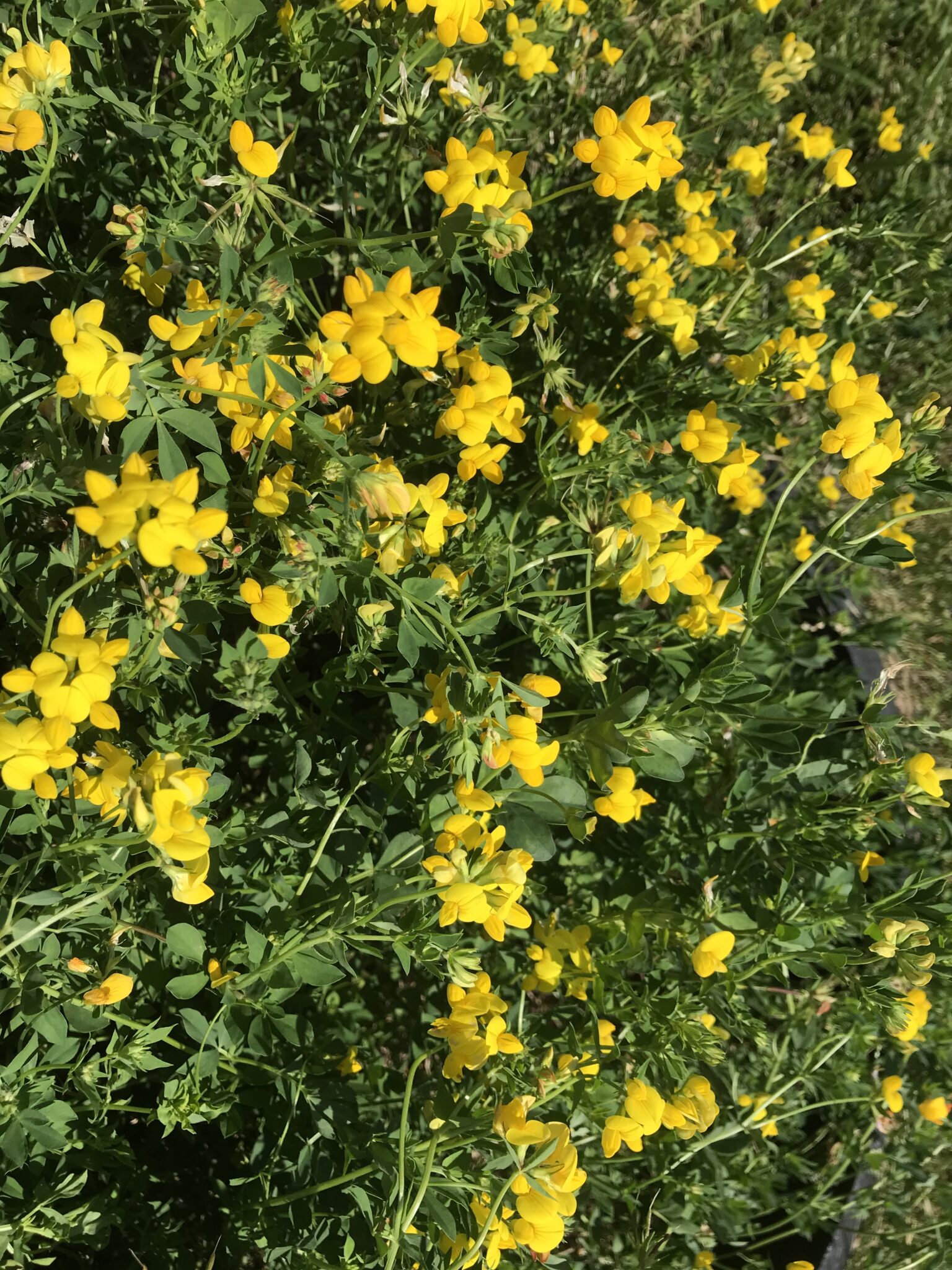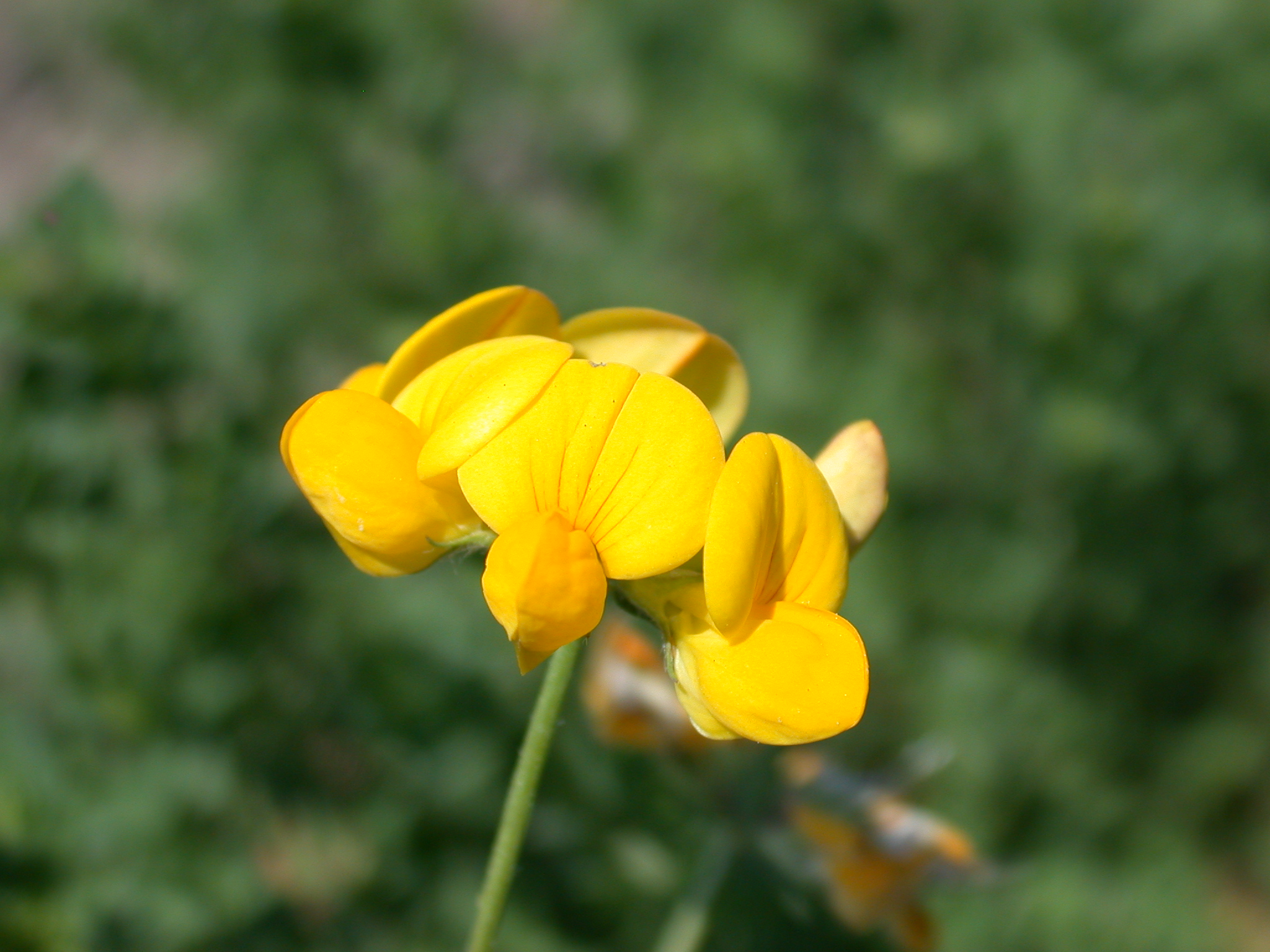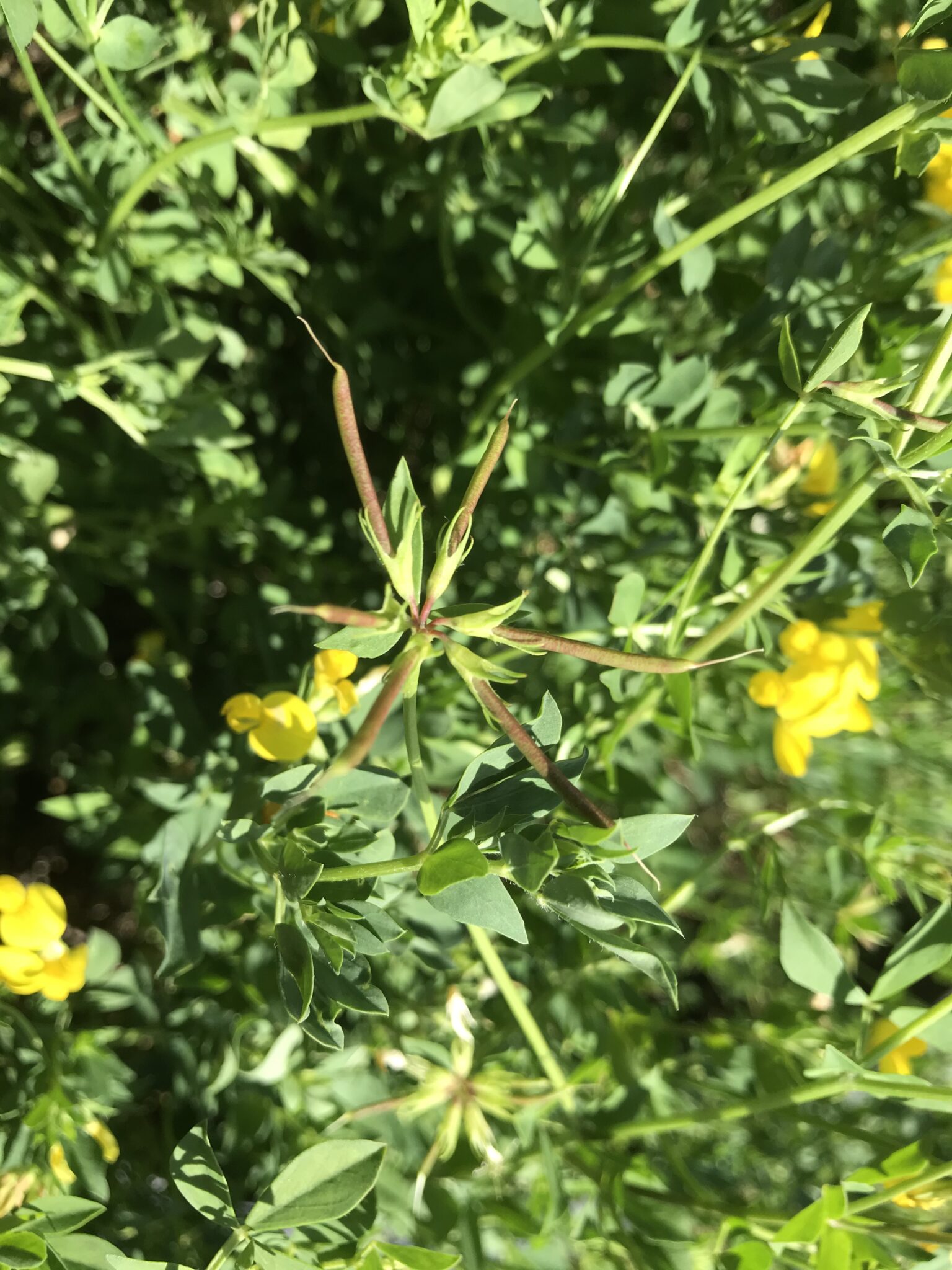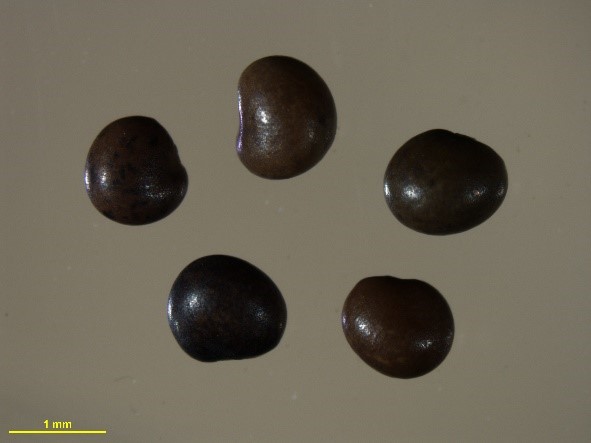Article is in memory of Henry Mayo, Purdue University Extension Sheep Specialist and a birdsfoot trefoil advocate.
You don’t see birdsfoot trefoil in many Indiana pastures. This perennial legume is in full bloom now with obvious bright yellow-orange flowers. The positive characteristics of this forage makes this legume worthy of consideration. Overgrazing must be avoided if birdsfoot trefoil is to survive. Basal leaves must not be grazed if birdsfoot trefoil is to remain in the pasture. With many livestock producers utilizing rotational stocking and better awareness that overgrazing should be avoided, this forage has a place in many Indiana pastures.
Information that follows about birdsfoot trefoil is from the Purdue Forage Field Guide (ID-317) with some modifications. Pictures were provided by the Purdue University Crop Diagnostic Training and Research Center.
Minimum Soil Requirements: Somewhat poorly drained, medium fertility, pH 6.0-6.8.
Plant Characteristics: Perennial legume. Has taproot and yellow-orange flowers. Grows 15-44 inches tall. Appears to have five leaflets per leaf, but the two at the base of the stem are considered stipules by some agronomists. Has high palatability, good winter hardiness, and fair drought tolerance. Maintains quality better than many other legumes because of a high leaf to stem ratio. If needed, deferring grazing until viable seed are present in seedpods can increase birdsfoot trefoil composition.
Seed Characteristics: Seeds per pound: 370,000. Emergence time: 7 days. Optimal germination temperature: 68°F. Seeding dates: March 1-May 1 or August 1-September 1. Pure live seed per acre: 4-6 pounds. Inoculate seed with a specific rhizobia bacteria.
Uses and Comments: A good complement with adapted cool-season grasses when used as pasture. Not a bloat concern. Some varieties are better for pasture as they are less erect in growth than those varieties best used as hay.
Distribution: The Upper Midwest and Northeast USA.
Cautions: Disease is a concern in high-humidity, high-temperature environments. For best persistence, make sure basal leaves are present after grazing or cutting.birdsfoot trefoil, pasture legume
If livestock producers have concern about bloat and do not permit their livestock to overgraze the forage, birdsfoot trefoil may be a worthy legume to include with cool-season grasses.







